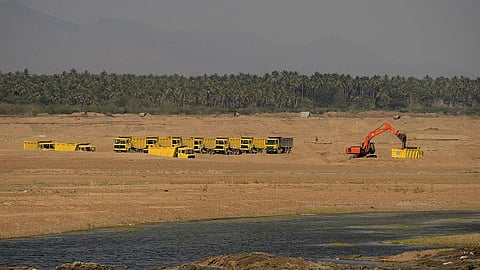
- Topics
- Feature
- Opportunities & Events
- About
- Hindi Portal
- Data
- Topics
- Feature
- Opportunities & Events
- About
- Hindi Portal
- Data

Sand is in high demand in the construction sector. By 2020, 1.4 billion tonnes of sand will be required in India. Sand mining is thus a lucrative business and fuels illegal extraction.
Illegal and unscientific sand mining is turning out to be one of the biggest ecological disasters in modern India. Around 26 people, including journalists and police officers, lost their lives in 2017 while trying to stop illegal sand mining.
River sand is preferred for construction because it requires less processing and has better quality than other sources. But it comes at a huge cost to the river and those living around it. Excessive sand mining can alter the river bed, force the river to change course, erode banks and lead to flooding. It also destroys the habitat of aquatic animals and micro-organisms besides affecting groundwater recharge.
Guidelines on the extraction of sand say that the amount of sand removed should be in proportion to its replenishment rate and river width. Mining from a braided channel with a wide floodplain will have less impact than from a narrow channel. Manual mining is preferred over the use of machines but enforcement and monitoring of these guidelines remain weak.
A few states are exploring options like manufactured sand, produced by crushing of rocks and quarry stones, to meet the ever-increasing demand of the construction industry. The new sand mining framework suggests the use of geo-fencing, and GPS-enabled transportation to check illegal mining. Price control, the involvement of women self-help groups and regular audits of sand reserves have also been recommended.
While some states have started implementing these suggestions, the corrective steps are too small to neutralise the ever-increasing footprint of the illegal sand extraction.